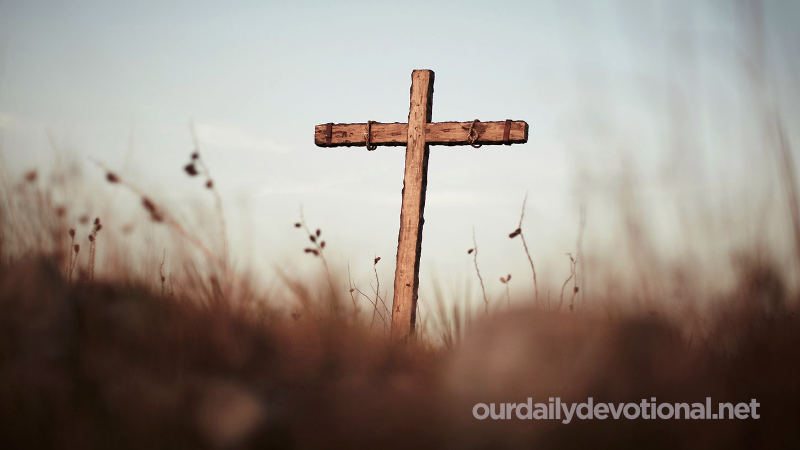Elevation east of Jerusalem, opposite the city (Zech. 15:4), and separated from it by the Kidron Valley (2 Sam. 15:14, 23, 30). Its summit and farthest slope were a Sabbath road (about 900 m.) from the city (Acts 1:12); Josephus speaks of 5 to 6 furlongs (Ant. 20:8, 6; Wars 5:2, 3).
David, in his flight from Absalom, walked along this hill, with his feet bare and his head veiled. At its summit was a sanctuary to Jehovah (2 Sam. 15:32).
Ezekiel saw the glory of Jehovah shining on this mountain as he left Jerusalem and the Temple (Ez. 11:23); According to Jewish tradition, he remained there for three and a half years.
Zechariah had a prophetic vision of the return of the Lord with all his saints, placing his feet on the Mount of Olives, and delivering the people from him (Zech. 14: 4-5; cf. Acts 1: 11- 12).
Jesus frequently visited this mountain (Lk. 21:37; 22:39; Jn. 8:1). From there he descended to receive the acclamations of the crowd (Lk. 19:37, 38).
Looking at the city, and knowing the fate it was going to suffer, Jesus wept over it (Lk. 19:41-44).
Sitting on this mountain, in front of Jerusalem, the Lord announced to his disciples the destruction of the magnificent Temple and the city (Mt. 24: 3; Mark 13: 3).
After having celebrated his last Passover, Jesus retired to the Mount of Olives (Mt. 26:30; Mark 14:26).
The garden of Gethsemane extended to the west, at the foot of this hill, or slightly on its slope. Bethany and Bethphage were on its eastern flank (Mt. 21:1; Mark 11:1; Luke 19:29).
Our Lord's ascension took place near Bethany (Lk. 24:50).
The Mount of Olives is undoubtedly the elevation that in Arabic is called Jebel et-Tûr, east of Jerusalem. This "mountain" is, in reality, an elevation that has three or four summits, with two lateral buttresses.
One of these buttresses heads west, and begins at the bend of the Kidron, about 1.5 km north of Jerusalem, reaching 812 m. above the level of the Mediterranean. This northern buttress is generally identified with Scopus (the sentinel), the hill spoken of by Josephus (Wars 2:19, 4), and where the Hebrew University of Jerusalem is currently located.
The other buttress, which also faces west, is separated from the main angle by the Kidron, and faces the city to the south. This buttress is called "Hill of Bad Counsel" because of a late and worthless tradition that states that Caiaphas had a country residence here, and that the main priests would have met there to plot the death of Jesus. (cf. Jn. 11:47-53). This height reaches 777 m.
Of the four peaks of the Olive Tree chain, the northernmost, Karem es-Sayyãd is the highest (830 m.). It had the name "Galilee" in memory of the Galileans who camped there on their way to Jerusalem for the festivals, or, according to an opinion issued in the 14th century, because this would have been the place where the angels spoke to the men of Galilee, after the Ascension.
The second summit is called Ascension. Already in the year 315 AD. It was considered the place from which Jesus ascended to heaven. Constantine had a basilica built there, whose place has been occupied throughout the ages by other churches commemorating the Ascension.
This second summit is the Mount of Olives itself. Located in front of the Eastern Gate of Jerusalem, it reaches 805 m. high, rising to 113 m. above the bed of the Kidron, and dominates the esplanade of the Temple from 63 m. Tall. The third summit is called the hill of the prophets, because there is a cave called the "tomb of the Prophets" there.
The epithets "Mount of Perdition", "Mount of Corruption", "Mount of Scandal" are applied to the fourth hill on the basis that it is there that Solomon erected the altars for the idolatrous worship of his women. The slopes that separate the hill of the Ascension from that of the Prophets are so small that one could speak of three summits instead of four.
At the foot of the Mount of Ascension, in the place traditionally identified as Gethsemane, the road forks, leaving the garden within the fork. A branch heads southward, gradually ascending, around the southern buttress, and towards Bethany and Jericho.
The northern branch heads east and then, about 45 m away, divides into three. The middle path climbs near the summit, passing near the so-called stone of Bethphage, and heads towards Bethany. The two branches that flank this abrupt middle path also reach the summit, but more progressively.
Behind the Kidron, on the eminence, a Roman road leading to Jericho climbed the western slope of the range near Aïn es-Suwan, gaining the ridge less than 1 km north of the summit of the Mount of Olives , on the slope north of Karem es-Syyãd, descending to the wadi, which crossed near the ruins of «Bukei'dan»; Then, leaving the Wadi Rawãbeh close to the north, the Roman road headed towards the Jordan.
Meaning of OLIVE (Mountain)
Elevation east of Jerusalem, opposite the city (Zech. 15:4), and separated from it by the Kidron Valley (2 Sam. 15:14, 23, 30).







